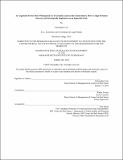An Argument for the More Widespread Use of Ground Leases in the United States: How to Align Pertinent Interests and Strategically Implement on an Impactful Scale
Author(s)
Carr, Christopher
DownloadThesis PDF (944.1Kb)
Advisor
Torous, Walter
Terms of use
Metadata
Show full item recordAbstract
As the most senior financial claim in the capital stack of a commercial real estate investment, ground leases have been deployed as an ownership strategy for centuries. Only in recent years has the singular investment thesis of the modern ground lease been proven in both the public and private markets by companies such as Safehold, Haven Capital and Montgomery Street Partners. As the nascent industry grows and matures, these companies aim to eliminate the opacity associated with uncertain future ground lease cash flow streams to both enhance the value of the leasehold interest to lessors and lessees and provide a bond-like security for investors. This strategy has yielded strong risk-adjusted returns to lessors, as evidenced by Safehold’s public valuation at a significant premium to its underlying net asset value, a rarity in the current market environment. Yet, the ground lease sector of commercial real estate remains small on a relative basis, and some market participants continue to be wary of transacting on ground leased properties in the same manner that they would transact on properties owned in fee simple.
This paper argues that there is significant, scalable opportunity for new entry into the ground lease sector of commercial real estate and further identifies multiple new structural components to be included in the modern ground lease. These new clauses should further align the interests of all property-level participants as well as increase liquidity for both the leased fee interest and the leasehold interest. Through industry research, an academic literature review and a simple, case-based numerical model, this paper demonstrates the viability of an expanded ground lease market and outlines the threshold stress limits that impact profitability. In times of relatively high interest rates, such as late 2022, this paper argues that ground leases with the structure proposed herein should be viewed as an attractive alternative financing source.
Date issued
2023-02Department
Massachusetts Institute of Technology. Center for Real Estate. Program in Real Estate Development.; Sloan School of ManagementPublisher
Massachusetts Institute of Technology